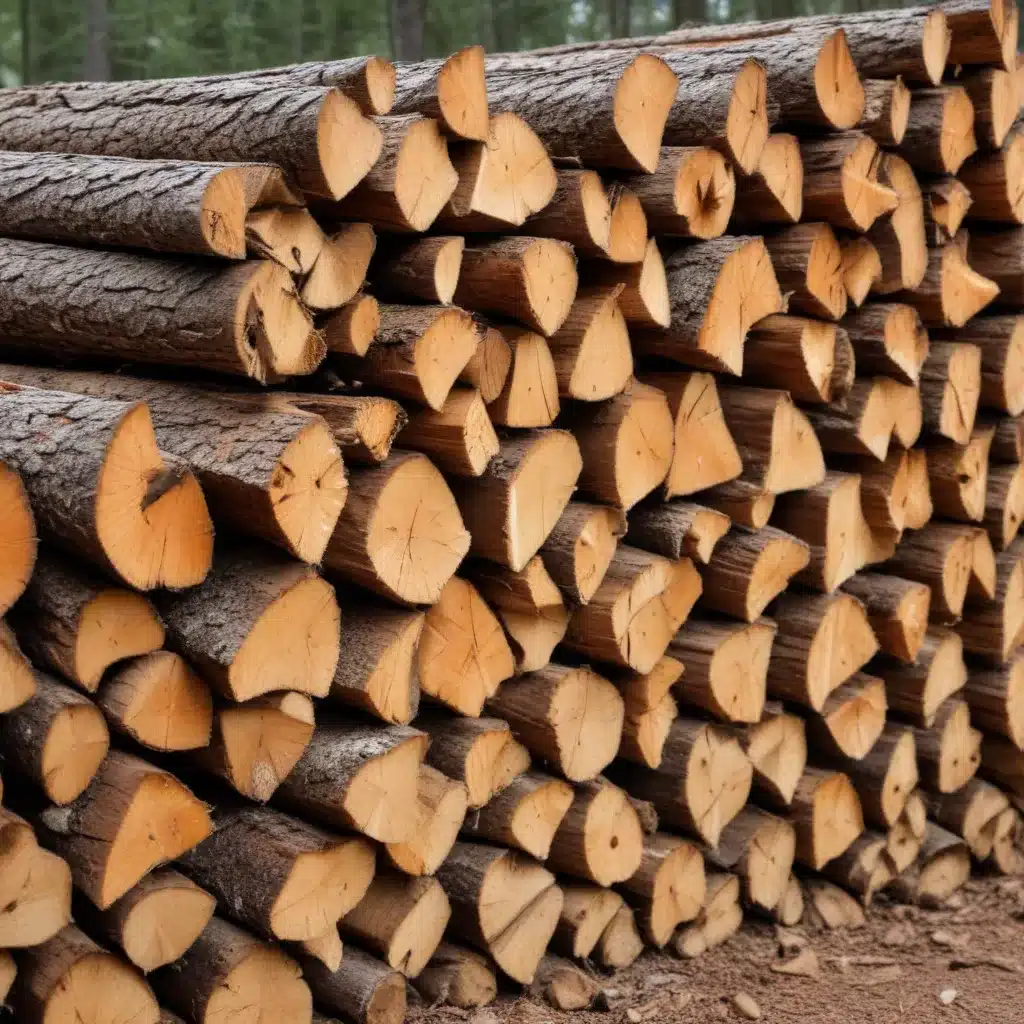
The Importance of Seasoned Firewood
When it comes to heating your home with a wood stove or fireplace, the quality and preparation of your firewood can make all the difference in the world. Properly seasoned firewood burns hotter, longer, and more efficiently, providing you with greater heat output and a cleaner, more enjoyable burn. On the other hand, burning unseasoned or “green” wood can lead to a host of problems, from excessive smoke and creosote buildup to reduced heat output and shorter burn times.
The key to achieving optimal firewood preparation lies in the seasoning process. Seasoning wood involves allowing it to dry out over time, reducing the moisture content to the ideal range of 15-20%. This drying process not only improves the combustion efficiency of the wood but also helps to eliminate potential issues like pest infestations and mold growth.
Understanding the Seasoning Process
The seasoning process for firewood typically takes between 6 months to 2 years, depending on various factors such as the type of wood, the climate, and the method of storage. During this time, the wood’s moisture content gradually decreases as the water inside the wood evaporates.
One of the primary factors that influences the seasoning process is the type of wood being used. Hardwoods, such as oak, maple, and hickory, generally take longer to season than softwoods, like pine or fir. Hardwoods tend to have a higher density and more moisture content, which means they require more time to dry out fully.
The climate and storage conditions also play a crucial role in the seasoning process. Warm, dry, and windy environments will accelerate the drying of the wood, while cool, humid, or shaded areas can slow it down. Proper stacking and storage techniques, such as keeping the wood off the ground and allowing for adequate airflow, can also significantly impact the seasoning timeline.
Maximizing Efficiency with Proper Stacking and Storage
Proper stacking and storage of firewood are essential for ensuring efficient seasoning and optimal burn performance. Here are some best practices to keep in mind:
Stacking Techniques
When stacking your firewood, it’s important to create a well-organized and well-ventilated structure. This can be achieved by:
- Stacking the wood in single, horizontal rows, with the cut ends facing the prevailing wind direction. This allows for maximum air circulation around the logs.
- Incorporating cross-stacking, where you alternate the orientation of the logs in each row, creating channels for airflow.
- Leaving some space between the logs to promote air circulation and prevent moisture buildup.
- Elevating the stack off the ground, using pallets or other supports, to prevent the absorption of ground moisture.
Storage Location
The location of your firewood storage is also crucial for the seasoning process. Ideally, you want to choose a spot that:
- Is located at least 5-30 feet away from any structures, such as your home or garage, to prevent pest infestations.
- Receives ample sunlight and exposure to prevailing winds to facilitate the drying process.
- Is sheltered from excessive rain or snow, which can reintroduce moisture to the wood.
Some homeowners opt to build dedicated firewood sheds or use tarps to provide overhead protection while still allowing for airflow around the stack.
Moisture Content Monitoring
Monitoring the moisture content of your firewood is an important step in ensuring it is properly seasoned and ready for burning. You can use a moisture meter to periodically check the moisture levels of your wood, aiming for a range of 15-20% before use.
The Benefits of Kiln-Dried Firewood
While air-drying firewood is a common and effective method, some homeowners may choose to use kiln-dried firewood instead. Kiln-dried firewood is wood that has been dried in a high-temperature oven, resulting in an even lower moisture content, typically below 20%.
The benefits of using kiln-dried firewood include:
- Faster ignition and more efficient combustion due to the reduced moisture content.
- Longer burn times, as the wood releases more energy per unit of mass.
- Reduced creosote buildup in chimneys and stovepipes, improving safety and reducing maintenance.
- Cleaner burning, with less smoke and fewer particulate emissions.
- Elimination of pests, mold, and other contaminants that can be present in air-dried wood.
While kiln-dried firewood may be more expensive than air-dried, the increased efficiency and convenience can make it a worthwhile investment for many homeowners.
Choosing the Right Wood for Your Needs
Not all firewood is created equal, and the type of wood you choose can have a significant impact on your overall heating experience. Here are some common wood types and their ideal applications:
- Oak: A popular choice for indoor fireplaces, oak burns cleanly and produces a long-lasting, even heat. Its moderate to low smoke output makes it well-suited for indoor use.
- Hickory: Known for its robust, smoky flavor, hickory is an excellent choice for outdoor grilling and smoking applications. Its high heat output and long burn time make it a great option for larger heating needs.
- Cherry: With its subtle, sweet aroma and low smoke production, cherry wood is ideal for creating a cozy, ambient atmosphere in indoor fireplaces and fire pits.
When selecting firewood, be sure to consider the specific requirements of your heating system, as well as your personal preferences for heat output, burn time, and aroma.
Conclusion
Achieving optimal firewood preparation is essential for maximizing the efficiency, burn time, and overall performance of your wood stove or fireplace. By understanding the seasoning process, implementing proper stacking and storage techniques, and choosing the right wood types, you can ensure that your heating system operates at its best, providing you with reliable, clean-burning heat all season long.
Remember, investing the time and effort into properly preparing your firewood is a small price to pay for the long-term benefits of a more efficient, cost-effective, and enjoyable heating solution. Happy burning!


